Hierophis viridiflavus
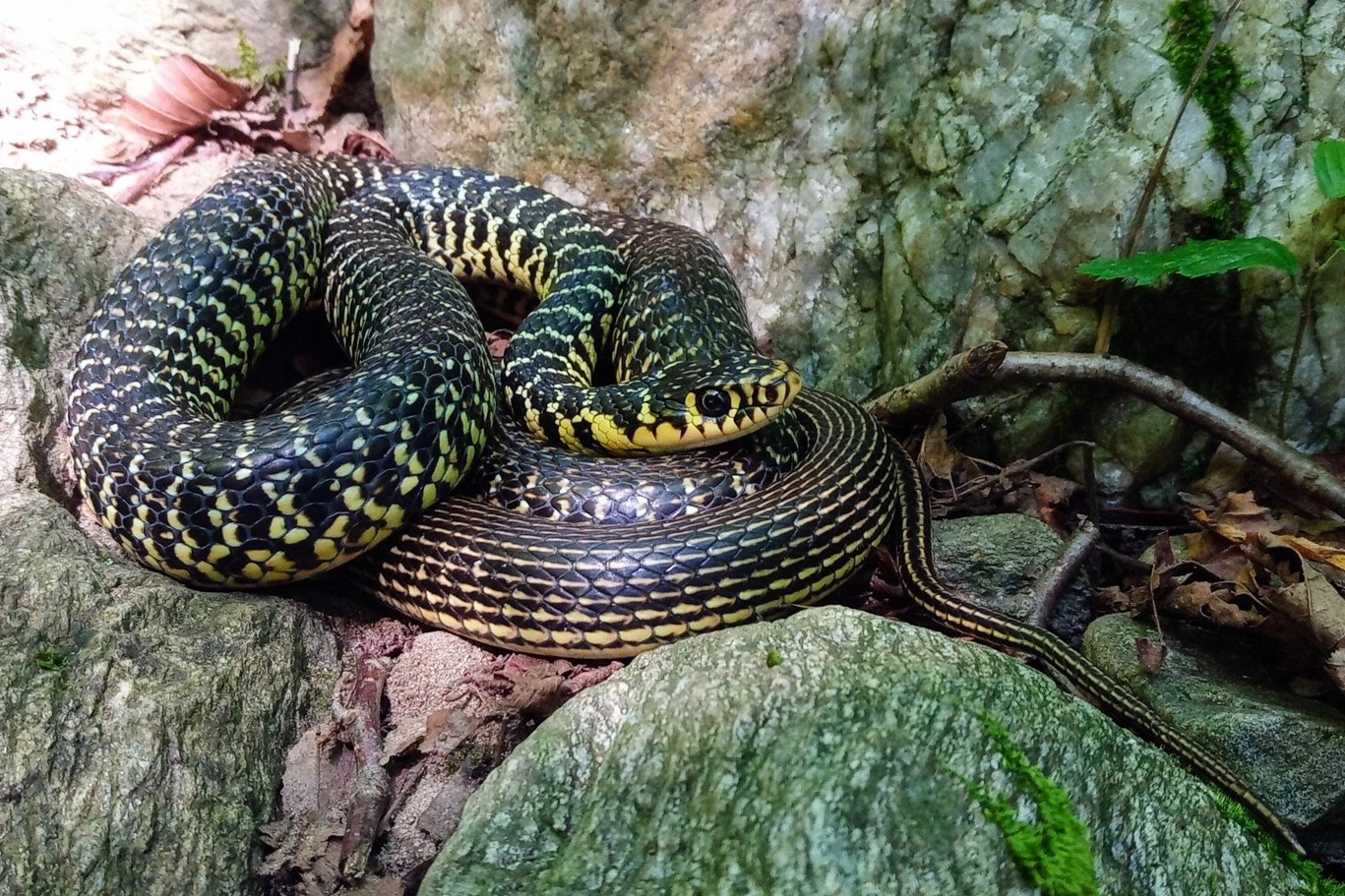

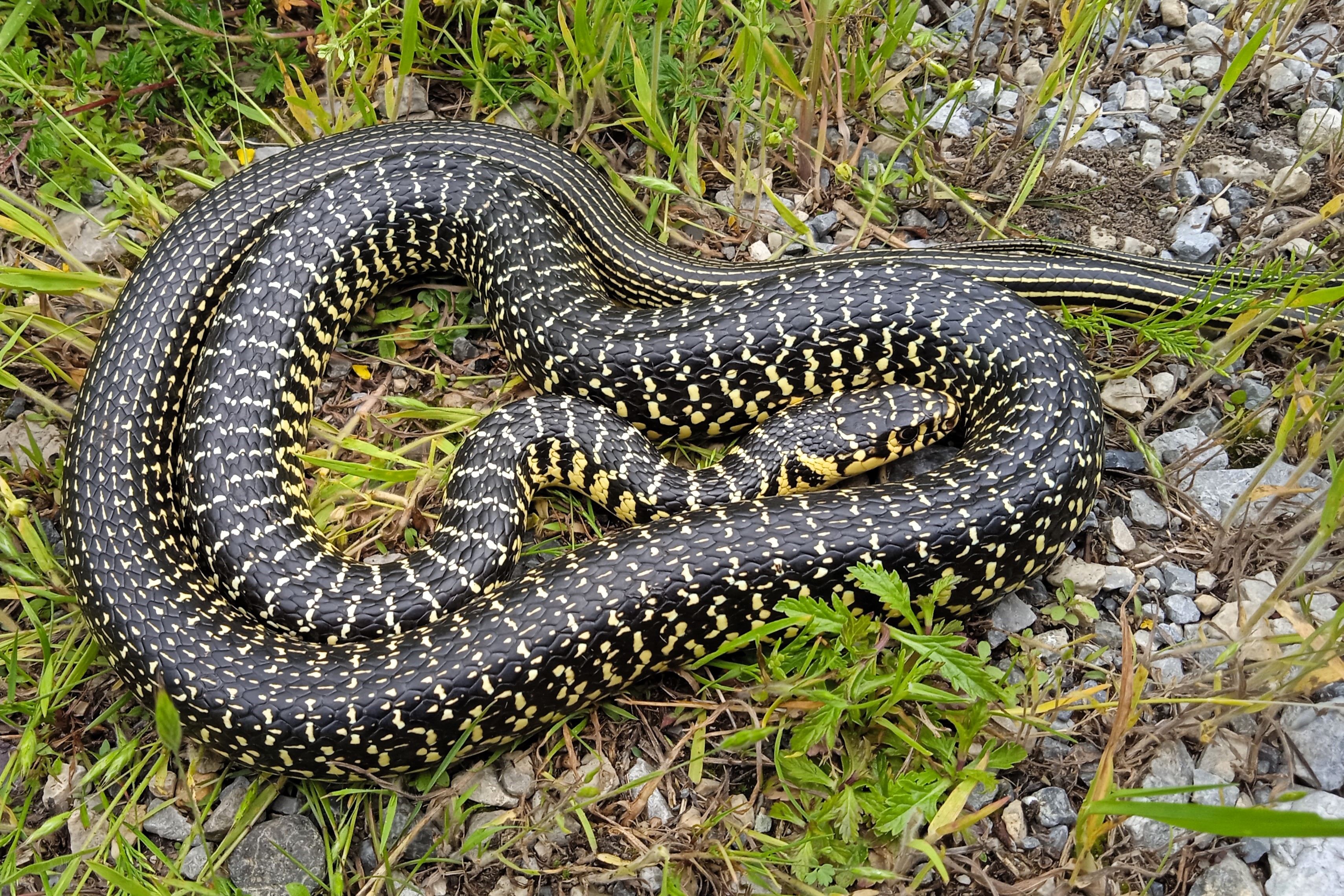
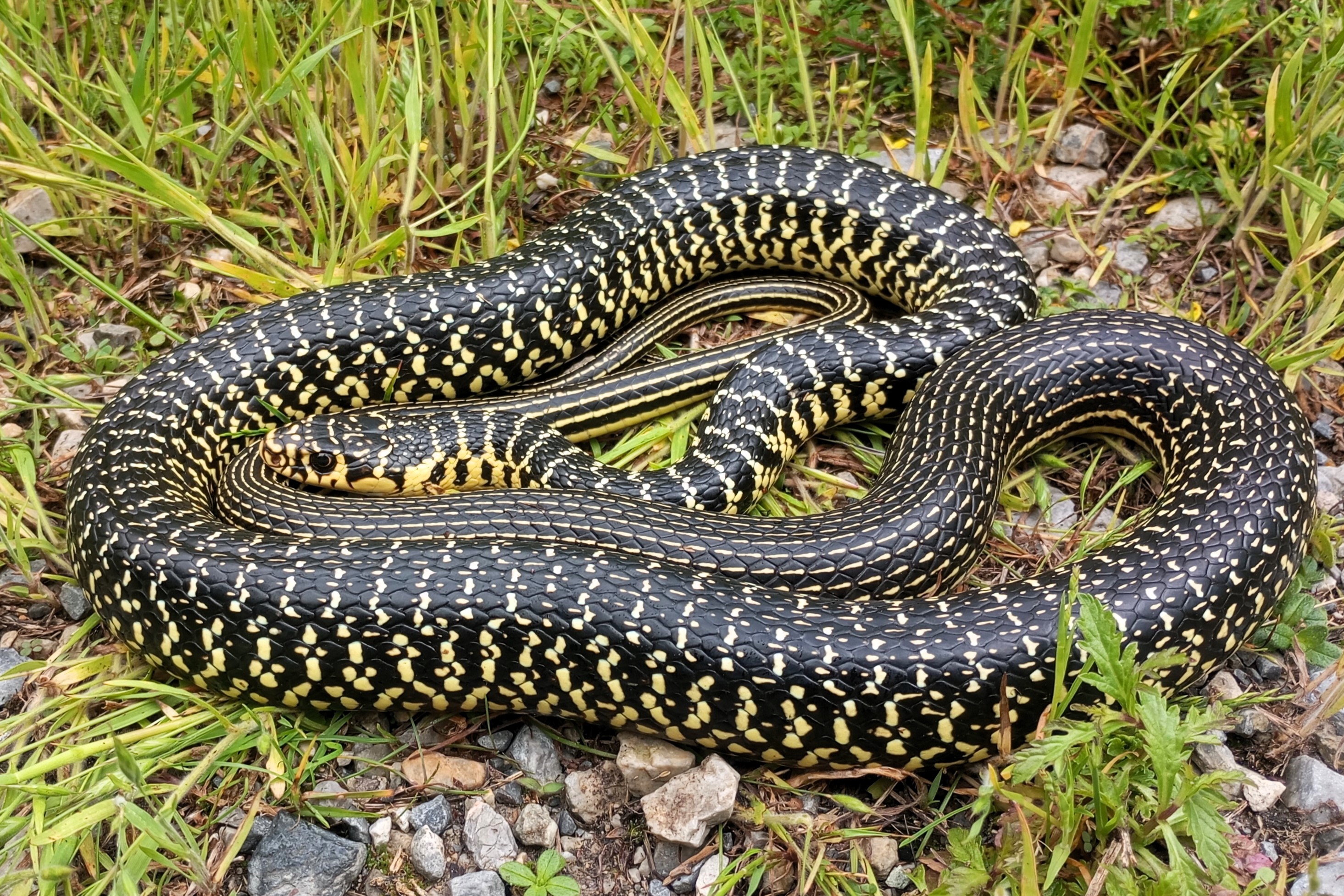
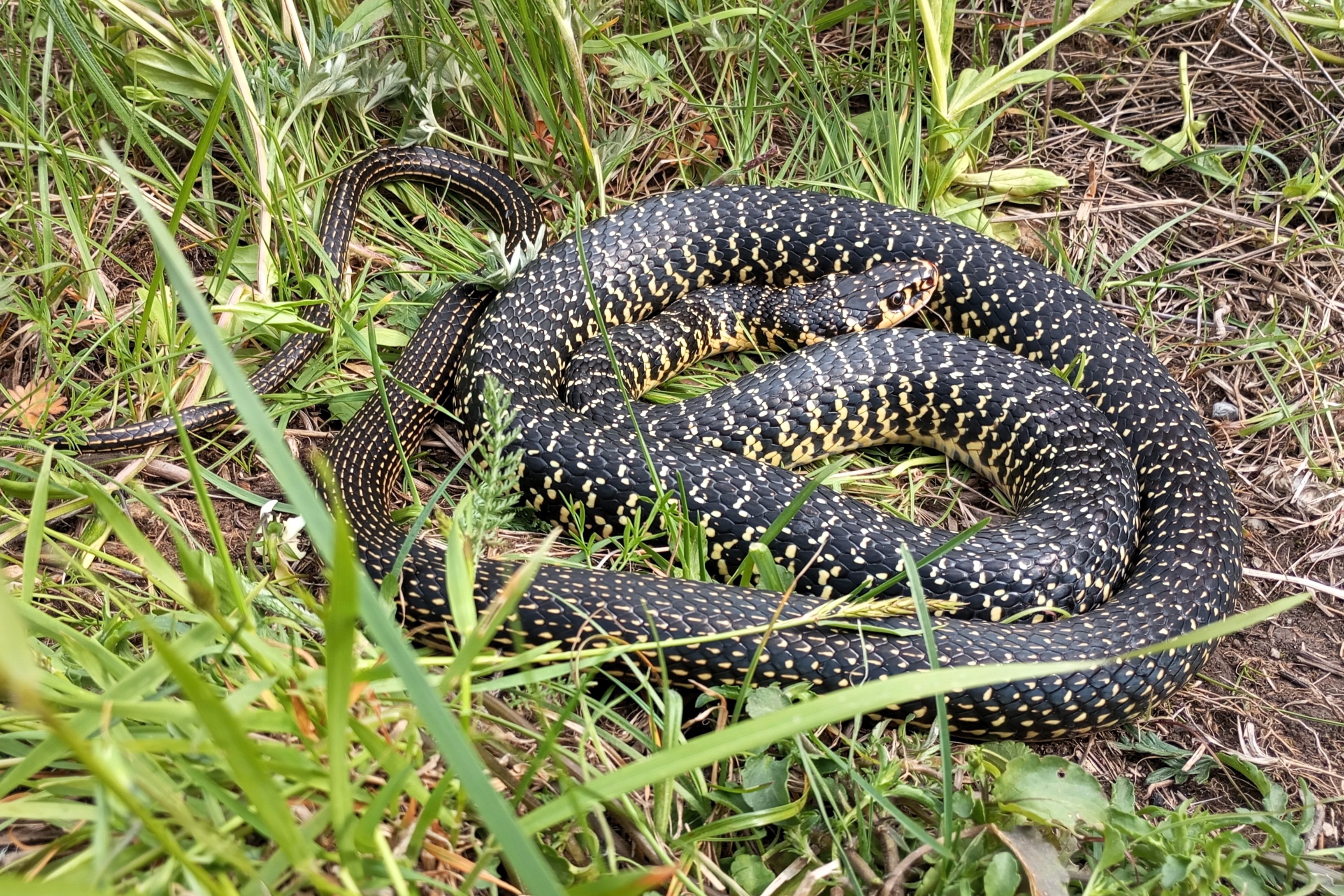
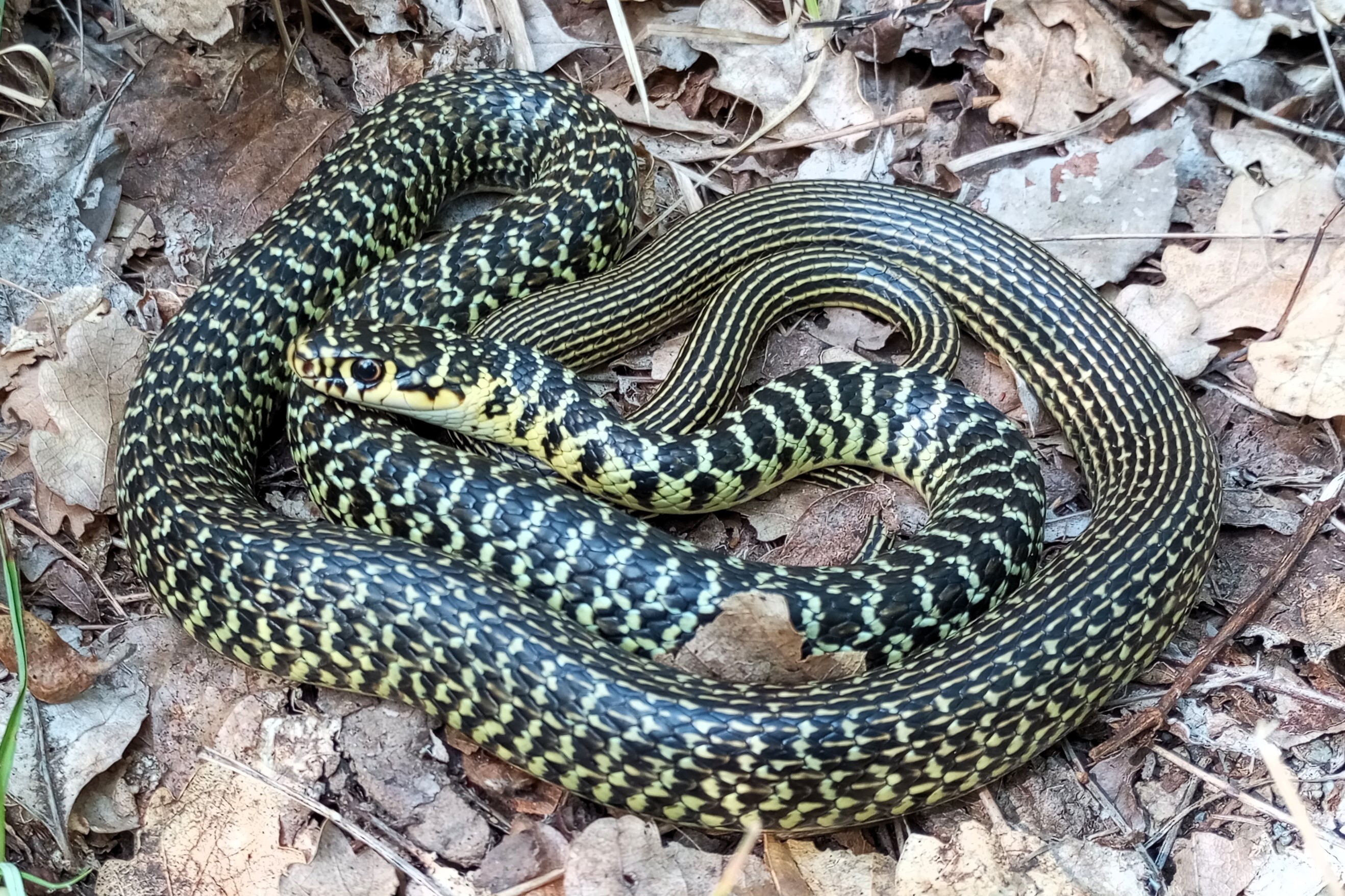
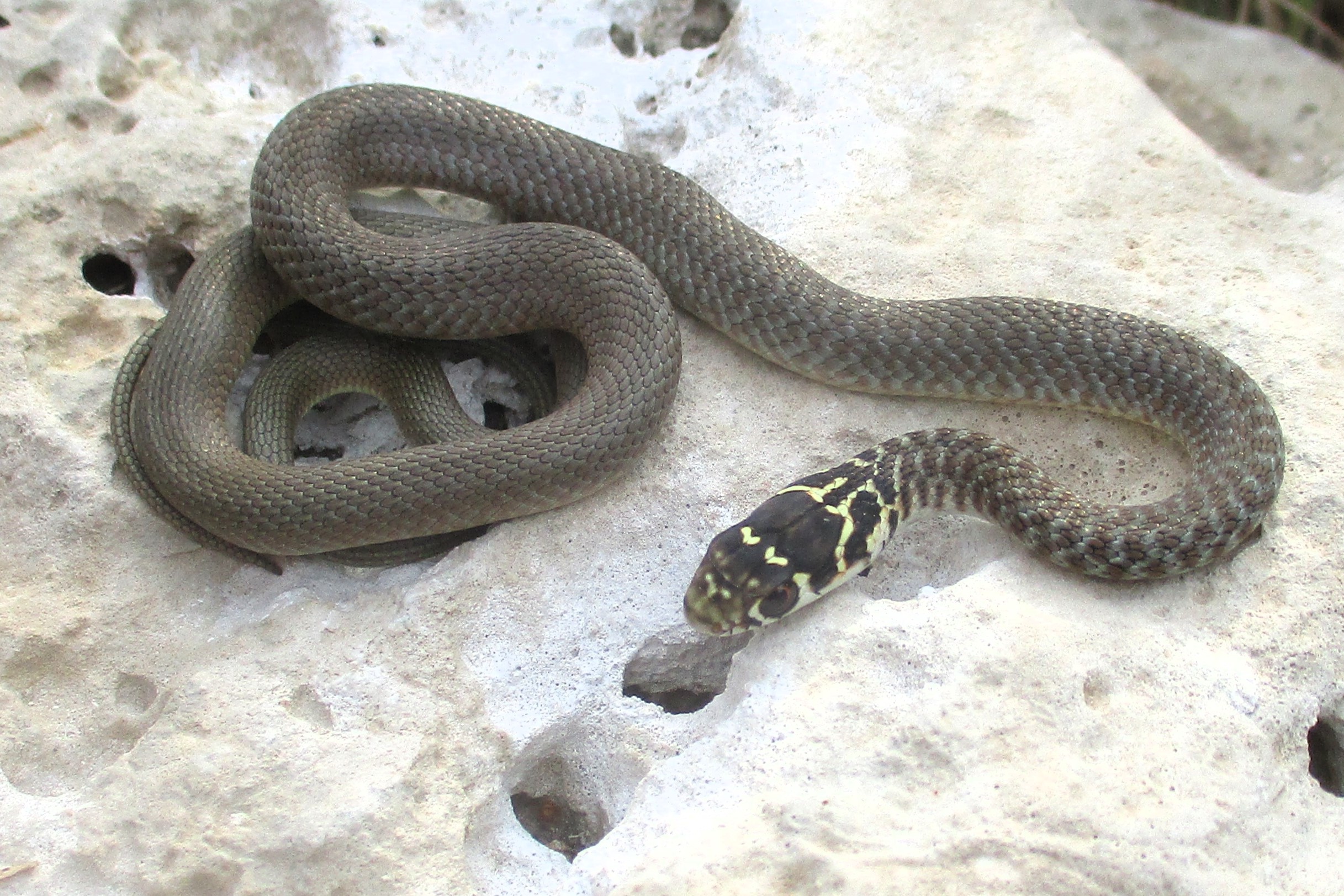
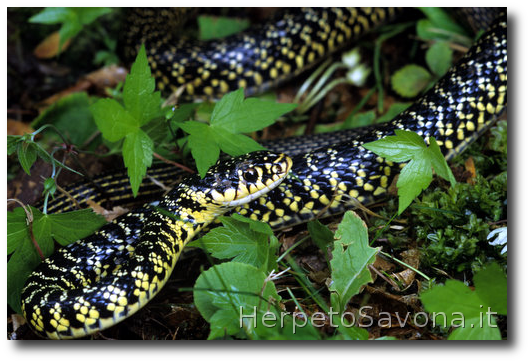
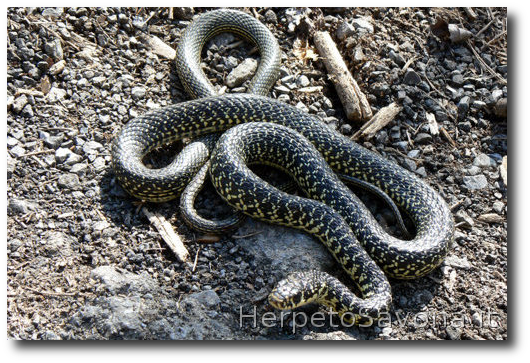
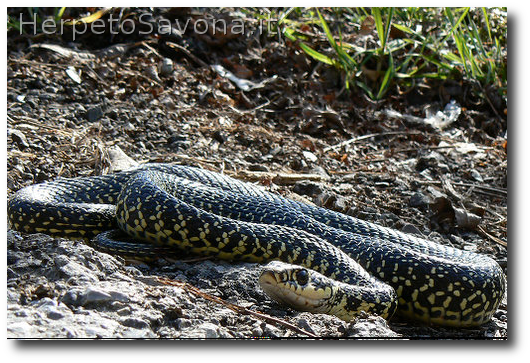
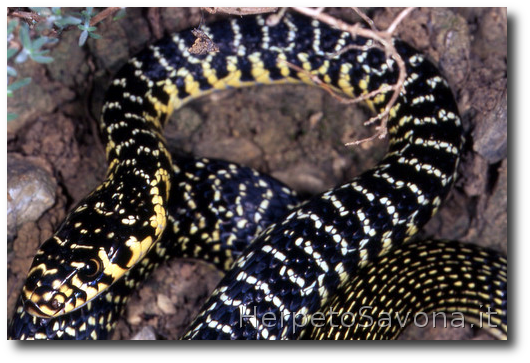
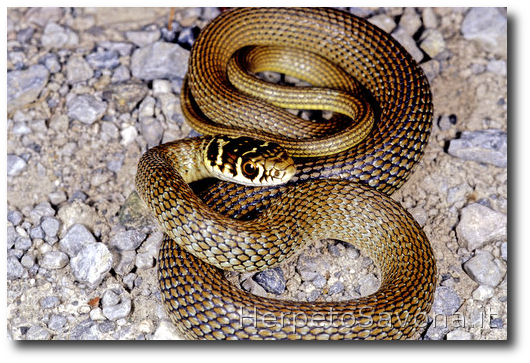
Reptilia → Squamata → Colubridae → Hierophis → Hierophis viridiflavus
Bissa neigra, Serpente frusta
The Western Whip Snake ( Hierophis viridiflavus ) is one of the most widespread and recognizable colubrids in Liguria, thanks to its robust yet slender appearance.
Adult individuals can reach considerable sizes: in males, total length can reach 59–63 in (150–160 cm), while females, generally smaller and stockier, rarely exceed 47–51 in (120–130 cm).
The body is extremely slim, the tail is long and thin, and the head is elongated and clearly distinct from the neck, equipped with large eyes with round pupils, giving the animal a keen and alert gaze.
The scales are smooth and give the animal a peculiar sheen.
In juvenile specimens, the coloration tends toward grey or brown, adorned with a series of dark spots uniformly distributed on the back and flanks.
In adults, two main phenotypes are recognizable: the typical form with a yellow-green background and dense black spots creating the characteristic marbled appearance, and the so-called "carbonaria" form, predominantly black or dark, more frequent in certain areas.
The underside is always light, yellowish or whitish.
The Western Whip Snake ( Hierophis viridiflavus ) is one of the most common and best-distributed species in the province of Savona and western Liguria, present from sea level up to about 4,900 ft (1,500 m) in altitude.
The species colonizes all suitable environments, showing greater density in inland hilly areas than in strictly coastal zones, where distribution may be influenced by the presence of the Montpellier Snake ( Malpolon monspessulanus ).
Its wide environmental adaptability allows the species to penetrate even areas strongly modified by humans, making it observable in both agricultural and urban environments.
The Western Whip Snake ( Hierophis viridiflavus ) displays marked environmental plasticity, being able to colonize a wide range of habitats:
The presence of favorable micro-habitats, such as stone walls or piles of wood, is vital for thermoregulation and protection during molting.
A strictly diurnal species, the Western Whip Snake ( Hierophis viridiflavus ) becomes active with rising temperatures starting in March and remains active until late October.
It is notable for its speed and agility when moving, and for its ability to climb among branches, walls, and vegetation.
Males tend to display territorial behavior and may engage in ritual combat during the breeding period.
Reproduction occurs in spring after winter hibernation; mating is followed by the laying of 5–15 eggs between June and July, in sheltered sites that are well exposed to heat.
Hatching occurs between August and September, and the young are immediately independent.
Sexual maturity is reached around 3–4 years of age.
The diet of the Western Whip Snake ( Hierophis viridiflavus ) is varied and changes with age:
This broad diet highlights its role as a top predator in local ecosystems, contributing to the natural control of rodents and maintaining ecological balance.
The Western Whip Snake ( Hierophis viridiflavus ) faces numerous hazards in the Savona and Ligurian area:
The Western Whip Snake ( Hierophis viridiflavus ) is an excellent thermoregulator, endowed with specific defensive behaviors: if threatened, it does not hesitate to react actively, raising the front part of its body and attempting to bite—its dentition is non-venomous, but the bite can be painful due to muscular strength.
It has good swimming abilities but rarely strays far from terrestrial refuges.
This species plays a key role within the local food web, both as a predator and as a food source for other animals, serving as an indicator of good environmental quality where numerous populations are found.
Precisely because of its ecological value, the Western Whip Snake ( Hierophis viridiflavus ) is protected by Italian and regional law: it is forbidden to kill individuals, remove eggs, or alter breeding sites.
The species, harmless to humans, should be protected by conserving dry stone walls, maintaining ecotonal areas, and reporting sightings to the relevant authorities.